There are easily over 15 types of camping styles for you to enjoy. So, what’s the best way to camp for you? Find out below!
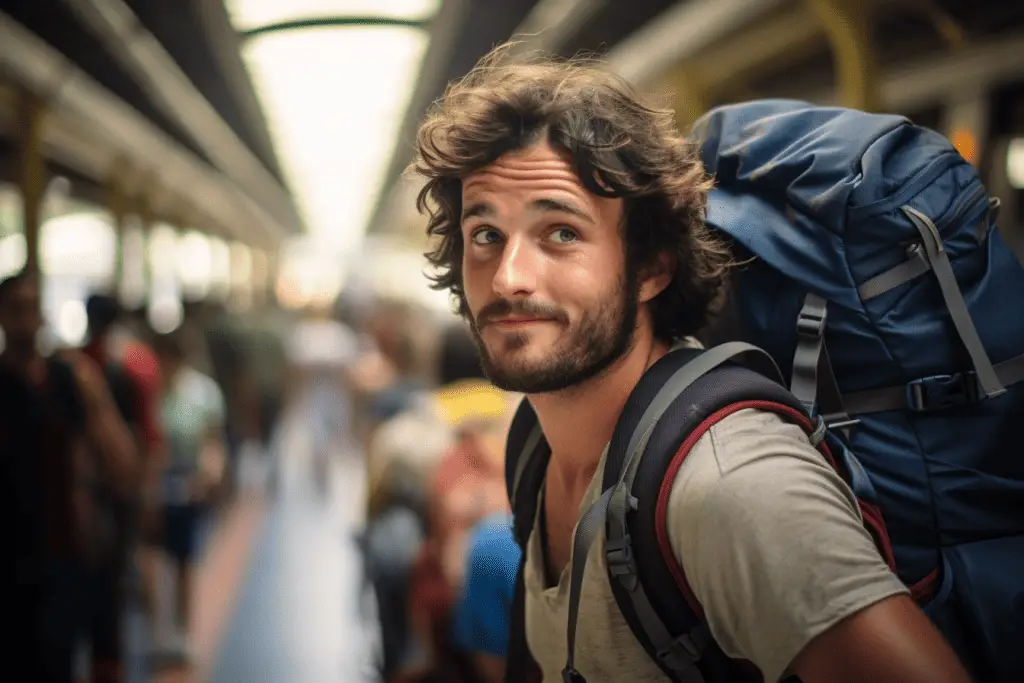
Different Types of Camping Styles (In Alphabetical Order)
Whether you’re a seasoned outdoors person or a newbie looking to swap city lights for starry nights, there are a ton of camping styles to suit every taste and skill level. From the rugged isolation of backcountry camping to the home-away-from-home comfort of RVs, each type of camping style has its unique allure and challenges.
To help you navigate your options, we’ve delved into several different camping styles, breaking down what makes each one special. We also outline some pros and cons for each, so you can make an informed decision on which style best suits your outdoor ambitions.
1. Backcountry Camping (AKA Wilderness Camping)
Backcountry camping is for those who want to escape the crowds and immerse themselves in nature. Unlike camping in established campgrounds, backcountry camping involves hiking to a remote area where you set up your tent, usually away from any amenities or services. This kind of camping often requires a permit, as many backcountry areas are protected lands, like national parks or wilderness reserves. The idea is to leave no trace, meaning you pack out everything you bring in and minimize your impact on the environment.
One of the most compelling aspects of wilderness camping is the solitude and natural beauty you’ll encounter. Far from roads and crowded campgrounds, you’ll likely have a more intimate experience with nature. You’ll also hone various outdoor skills, from navigation to fire-making. On the flip side, the remote nature of backcountry camping means you’ll need to be well-prepared and self-reliant. You’re on your own for things like food, water, and first aid, and help can be far away in case of emergency.
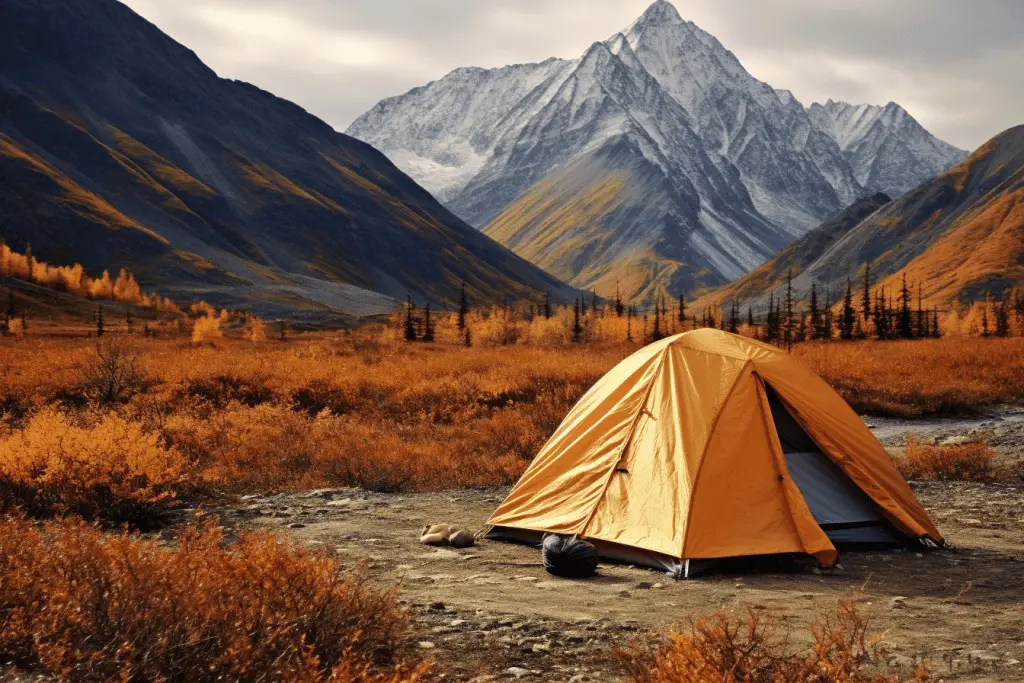
While the experience can be deeply rewarding, backcountry camping isn’t without its challenges. For one, it typically involves a strenuous hike to reach your camping spot, so a good level of physical fitness is essential. And since you have to carry everything you’ll need, efficient packing is crucial. The elements can also be unforgiving; you’ll need to be prepared for anything from sudden weather changes to encounters with wildlife.
Here’s a table summarizing the pros and cons of backcountry camping:
| Pros | Cons |
|---|---|
| Solitude: Less crowded | Physical Demand: Can be strenuous |
| Close to Nature: Intimate experience | Self-Reliance: Must carry all necessities |
| Skill Development: Hones outdoor skills | Safety Risks: Help can be far away |
| Minimal Impact: Leave No Trace principles | Permit Required: Usually needs prior approval |
| Adventure: Explore untouched areas | Packing Challenges: Must be efficient |
Backcountry camping is a fulfilling, albeit challenging, way to connect with the great outdoors. It’s ideal for those looking to push their limits, both physically and mentally, while enjoying an authentic wilderness experience. But remember, it’s not a casual undertaking; preparation and know-how are key to making your trip both enjoyable and safe.
2. Beach Camping
Beach camping is the perfect way to marry a love for the ocean with the joy of the great outdoors. Imagine falling asleep to the sound of waves crashing and waking up to a beach sunrise right outside your tent. The setting is naturally calming, providing a unique backdrop for both relaxation and adventure. Whether you enjoy surfing, beachcombing, or just lounging by the shore, everything is right at your doorstep when you’re beach camping.
One of the great things about beach camping is its accessibility. Many locations don’t require you to hike long distances, making it suitable for families or those new to camping. However, camping on the beach often comes with some rules and regulations, like the need for permits and adherence to specific environmental guidelines. These rules are in place to protect fragile ecosystems, so it’s crucial to do your research and plan accordingly.
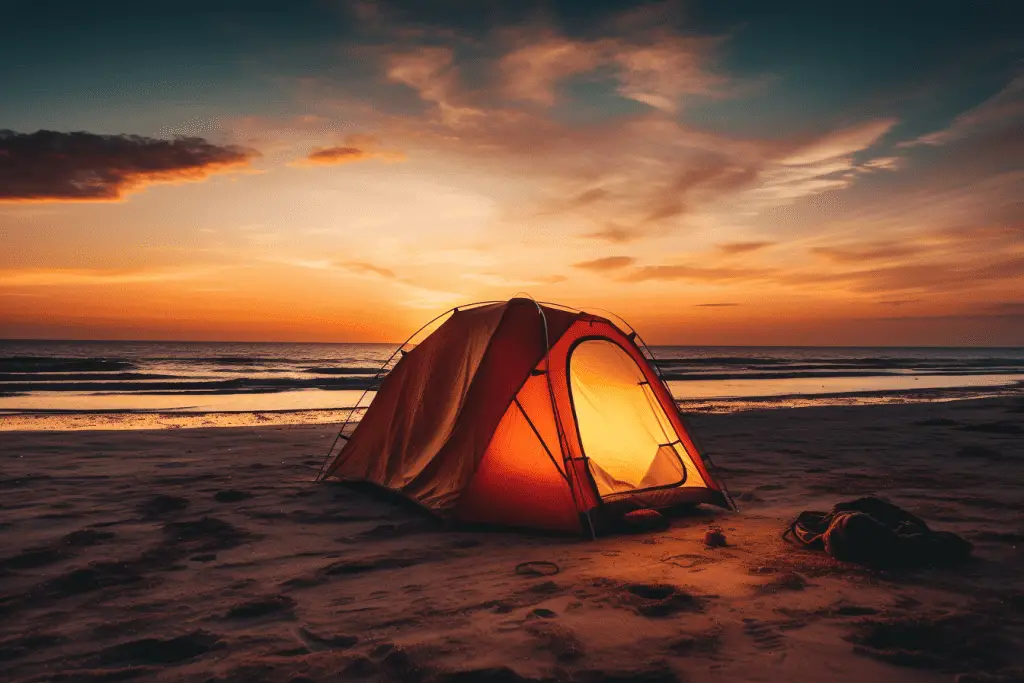
A common pitfall of beach camping is underestimating the elements. The sun, sand, and saltwater combo can be harsh on both your gear and your skin. It’s important to bring sun protection, and perhaps even a sunshade, to provide some relief from the rays. Sand management can also be challenging; it tends to get everywhere, so pack gear that’s easy to shake out and clean.
If you’re contemplating a beach camping adventure, consider these pros and cons:
| Pros | Cons |
|---|---|
| Scenic Views: Ocean sunrises and sunsets | Permit Required: Often needs pre-booking |
| Easy Access: Usually close to parking | Elements: Sun, sand, and wind can be harsh |
| Water Activities: Surfing, swimming, fishing | Environmental Concerns: Need to follow guidelines |
| Relaxing Atmosphere: The sound of waves | Wildlife: Potential for pests like seagulls or raccoons |
| Family-Friendly: Great for all ages | Sand: Gets into everything |
| Fresh Seafood: Potential for fishing | Limited Privacy: Popular beaches can be crowded |
3. Bikepacking
Bikepacking combines the best of mountain biking and lightweight backpacking, offering an exciting way to explore remote locations. Instead of hiking trails with a heavy pack, you load all your essential gear onto your mountain bike. The setup usually involves a mix of frame bags, saddle bags, and handlebar rolls, all strategically placed to distribute weight and make handling easier. This way, you can cover more ground than traditional backpacking and access trails that would be difficult with a larger vehicle.
The allure of bikepacking lies in its simplicity and the sense of adventure it offers. There’s something exhilarating about navigating through rugged terrain, whether it’s a dense forest, open plains, or mountainous areas. Given the limited storage capacity, bikepacking forces you to be a minimalist, choosing only the most essential items to bring along. This also makes the experience more intimate with nature, as you’ll have fewer distractions and a closer connection to your surroundings.
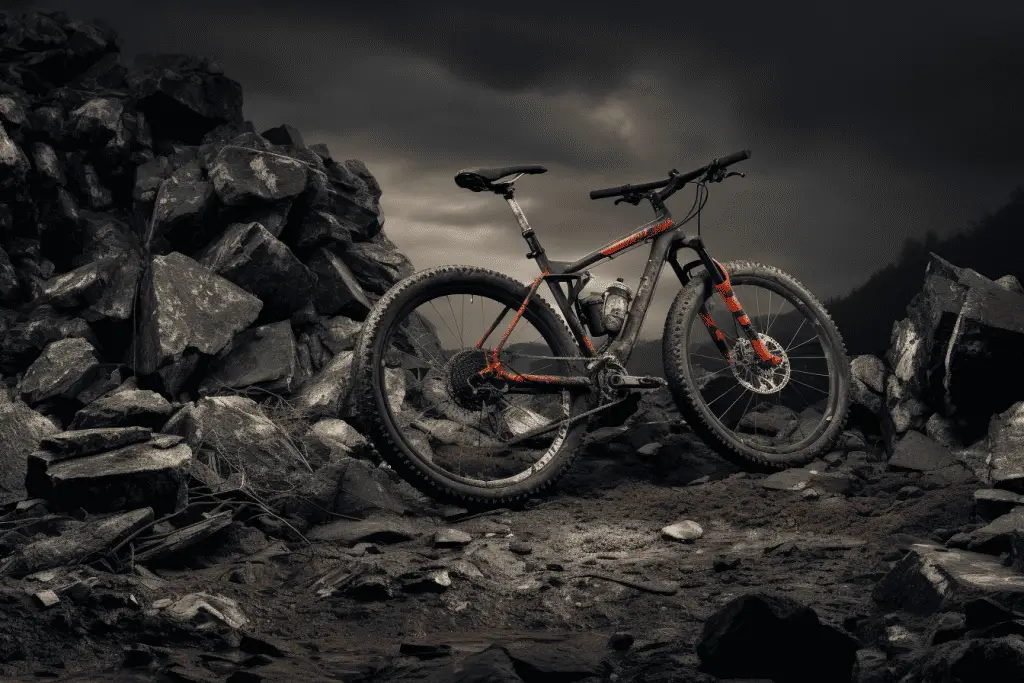
If you’re new to camping with a bike, planning is crucial. Choose a route that suits your skill level and make sure you’re well-versed in basic bike maintenance. Knowing how to fix a flat tire or adjust your bike’s gears can be a lifesaver when you’re miles away from civilization. And always make sure to pack emergency supplies and enough food and water to sustain you for the duration of your journey.
Here are the pros and cons of bikepacking:
| Pros | Cons |
|---|---|
| Greater Range: Cover more distance | Technical Skills: Requires bike maintenance knowledge |
| Versatility: Access varied terrains | Limited Cargo: Less gear due to space constraints |
| Minimalism: Forces focus on essentials | Physical Demand: Can be physically exhausting |
| Adventure: Offers a unique sense of thrill | Equipment Cost: Initial setup can be expensive |
| Eco-Friendly: Lower environmental impact | Risk of Isolation: Often in remote areas |
| Multi-Sport: Combines cycling and hiking | Weather Dependent: Can be challenging in adverse conditions |
| Fitness: Good exercise | Complexity: Route planning and navigation required |
| Quick Setup: Faster than setting up camp | Accessibility: Some trails may prohibit bikes |
4. Canoe or Kayak Camping
Canoe/Kayak camping is an adventurous way to unplug and immerse yourself in nature. Imagine paddling through serene waters, surrounded by picturesque landscapes, to reach a remote campsite that’s far from the crowds. The journey is as much a part of the experience as the destination. Depending on the waterway, you might navigate through calm lakes, winding rivers, or even ocean coasts to get to your campsite. The variety makes each trip unique and adaptable to different skill levels.
The key advantage of canoe camping is the freedom to explore secluded areas that are often inaccessible by foot or vehicle. You can bring more gear than you would with backpacking, thanks to the storage capacity of your canoe or kayak. This opens up options for more comfortable camping, such as better cooking equipment or a more spacious tent. Still, it’s essential to pack wisely to keep the boat balanced and to leave room for safety gear.
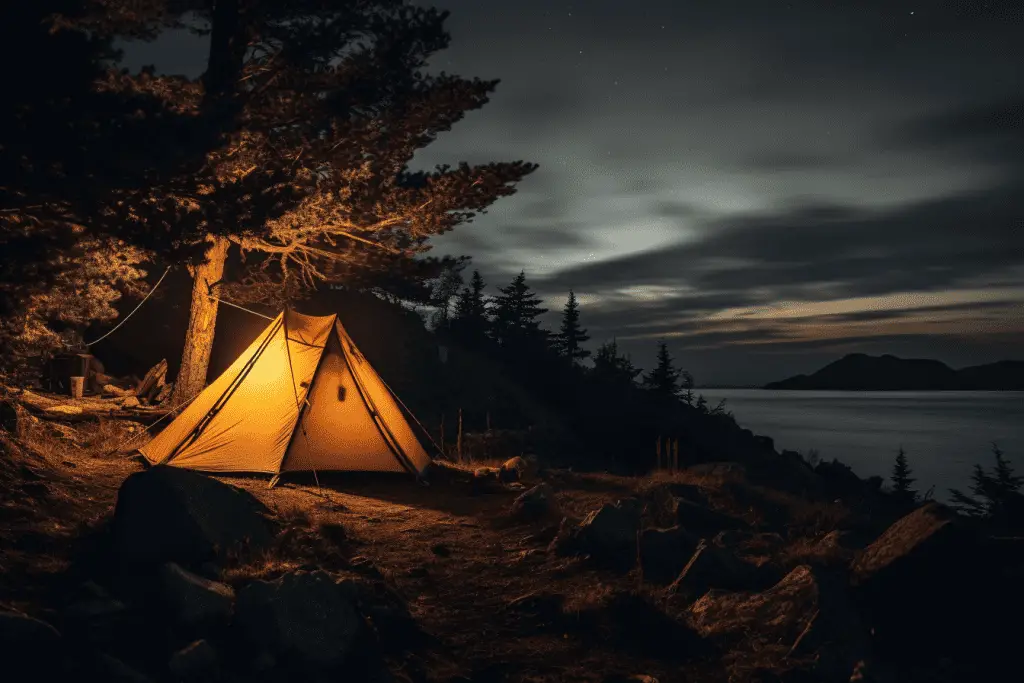
Speaking of safety, it’s vital to prepare for the aquatic aspects of the trip. Knowledge of water safety protocols, weather conditions, and basic paddling skills are a must. Depending on the water body, you might need to consider tides, currents, or even rapids. Also, waterproofing your gear is crucial—there’s a good chance you’ll get wet at some point, either from paddling or from an unexpected tip-over.
So, is canoe/kayak camping for you? Consider these pros and cons:
| Pros | Cons |
|---|---|
| Secluded Sites: Access remote areas | Skill Requirement: Need for paddling skills |
| More Gear: Larger carrying capacity | Water Safety: Risks like capsizing |
| Scenic Paddling: Unique vantage points | Weather-Dependent: Wind and rain can hinder plans |
| Versatility: Different waterways | Gear Waterproofing: Must protect belongings |
| Physical Exercise: Good workout | Longer Setup: Time to unload and set up camp |
| Wildlife Viewing: Closer to nature | Limited Range: Dependent on water routes |
5. Car Camping
Car camping is like the gateway drug of the camping world—it’s an easy and accessible way to get a taste of outdoor life without venturing too far from civilization. In essence, you’re setting up camp in a location where you can park your car nearby. This allows for some awesome conveniences like easy access to supplies, extra storage, and a quick escape route if the weather turns sour. Many established campgrounds offer car camping spots complete with picnic tables, fire pits, and sometimes even electrical hookups.
One of the major perks of car camping is the ability to pack more stuff. Since you’re not hauling your gear for miles, you can afford to bring along extra luxuries like a thicker mattress, a cooler full of food, or even some camping furniture. It’s a fantastic option for families, beginners, or anyone who enjoys the great outdoors but also appreciates a few home comforts. Plus, setup and takedown are usually easier compared to other camping styles because you don’t have to carry gear far from your car to the campsite.
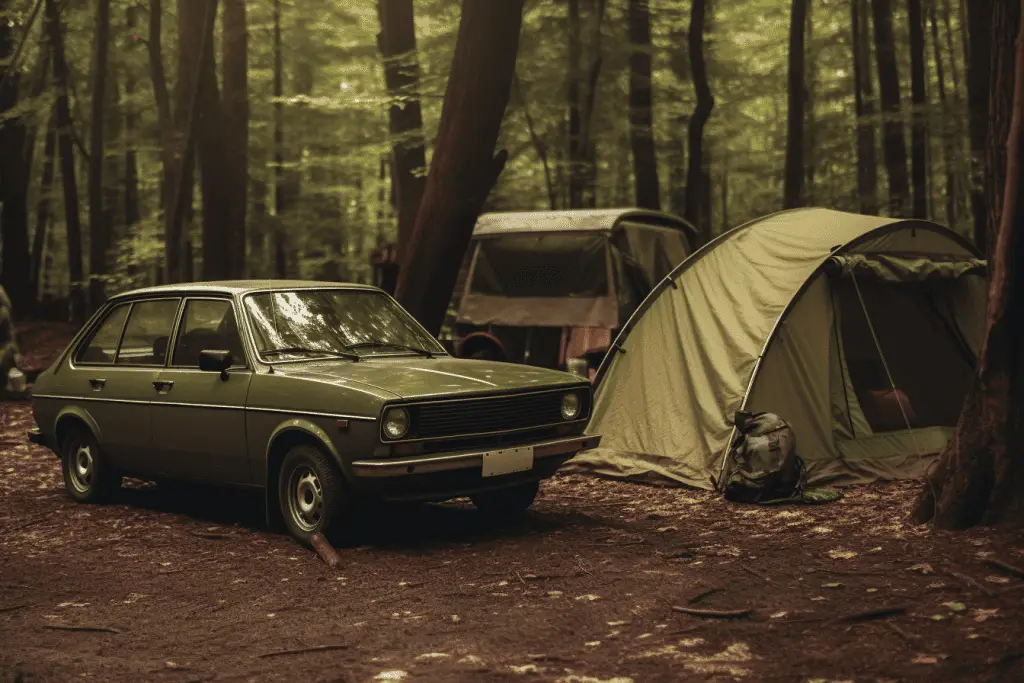
However, the convenience of car camping also brings some downsides. For instance, these campgrounds can get crowded, especially during peak season, which might not be ideal for those seeking solitude. Noise and light pollution from other campers could also disturb the peace. Additionally, having your car nearby could lead to over-packing, which somewhat defeats the purpose of a minimalist outdoor experience.
Here are some pros and cons to consider:
| Pros | Cons |
|---|---|
| Convenience: Easy access to supplies | Crowds: Can get busy |
| Comfort: More room for luxuries | Noise/Light Pollution: Less peaceful |
| Family-Friendly: Good for all ages | Over-Packing: Temptation to bring too much |
| Easy Setup: Less hauling of equipment | Less Immersive: Could feel less “outdoorsy” |
| Safety: Car is available for emergencies | Environmental Impact: More waste potential |
Car camping offers an excellent entry point for newcomers to the camping world or for those who simply prefer a more comfortable experience. While it may not offer the same back-to-nature vibe as other types of camping, the convenience and ease make it a popular choice for many. Just be mindful of your impact and respectful of other campers, and you’re in for a great time.
6. Cliff Camping
Cliff camping is not for the faint of heart, but it’s an adrenaline-pumping experience that’s sure to leave a lasting impression. Imagine sleeping suspended from the side of a sheer rock face, hundreds of feet above the ground, with nothing but the night sky above you and vast landscapes stretching out below. It’s an exhilarating blend of rock climbing and camping where adventurers use specialized gear to securely anchor a hanging tent, known as a portaledge, to the side of a cliff.
If you’re an experienced climber and looking for a new challenge, cliff camping offers a thrilling twist to conventional camping. It allows you to access remote and scenic spots that are impossible to reach by any other means. Plus, the solitude and intimacy with nature are unparalleled—you’re literally hanging out in a vertical world far removed from civilization.
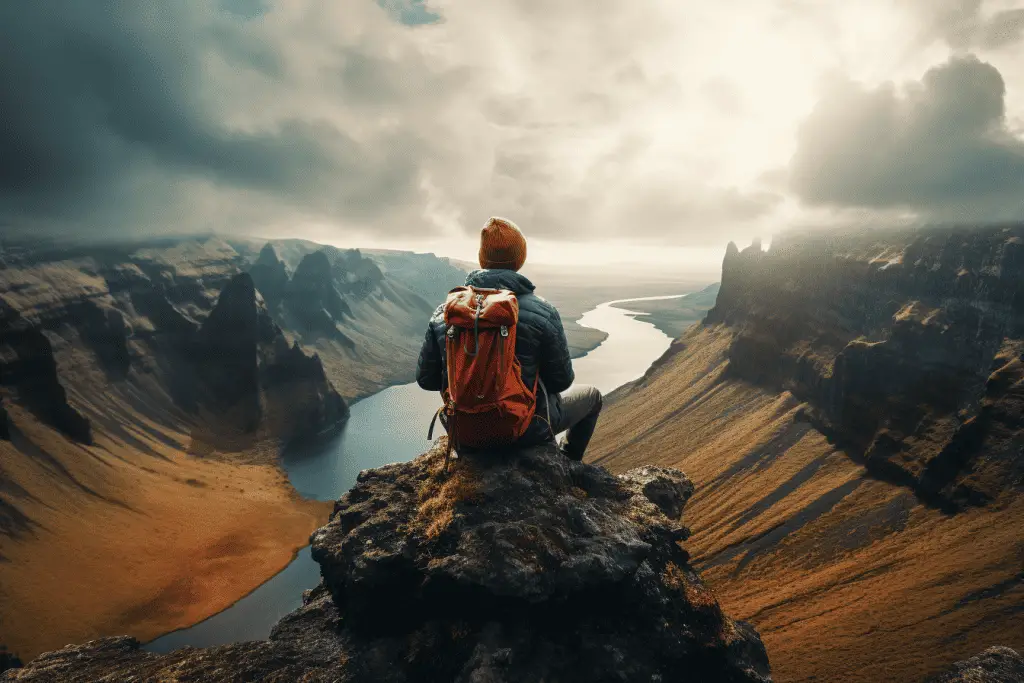
However, cliff camping comes with its own set of challenges and should only be attempted by those with the appropriate climbing skills and experience. Safety is the paramount concern, and you’ll need specialized equipment like anchors, ropes, and a portaledge. Weather conditions also play a critical role; the last thing you want is to get caught in a storm while hanging off a cliff. It’s imperative to understand the technicalities and risks involved, and to be prepared for emergencies.
Here’s a quick table outlining the pros and cons:
| Pros | Cons |
|---|---|
| Ultimate Adventure: Highly exhilarating | Skill Required: Not for beginners |
| Access to Remote Locations: Unique spots | Specialized Gear: Needs anchors, ropes, portaledge |
| Unparalleled Solitude: Few dare to try it | Safety Concerns: High-risk activity |
| Close to Nature: Intimate experience | Weather-Dependent: Vulnerable to conditions |
| Stunning Views: Unbeatable scenery | Cost: Equipment and possible guides are expensive |
Cliff camping is the epitome of high-stakes, high-reward adventure camping. It offers breathtaking views and solitude in hard-to-reach locations. But the risks are equally high, making this a style of camping best suited for experienced climbers with a solid understanding of safety protocols. If you tick those boxes, then prepare for an unforgettable night suspended between the earth and the stars.
7. Dispersed Camping
Dispersed camping is for those who truly want to escape the crowds and get back to nature. Unlike traditional campgrounds with amenities like restrooms and picnic tables, dispersed camping typically takes place in national forests or grasslands and offers no amenities. You’re out in the wilderness, and it’s just you, your gear, and Mother Nature. This form of camping allows you to experience the environment in its most natural state, often far away from the buzz of civilization.
One of the most appealing aspects of dispersed camping is the solitude and freedom it offers. You’re not limited to a designated plot of land; you can set up camp virtually anywhere that’s legal and safe. This gives you the flexibility to find a spot with an amazing view, near a stream, or in a dense forest—whatever your heart desires. However, this also means you’re fully responsible for your own safety and comfort. It’s essential to pack in everything you’ll need and follow Leave No Trace principles to protect these fragile ecosystems.
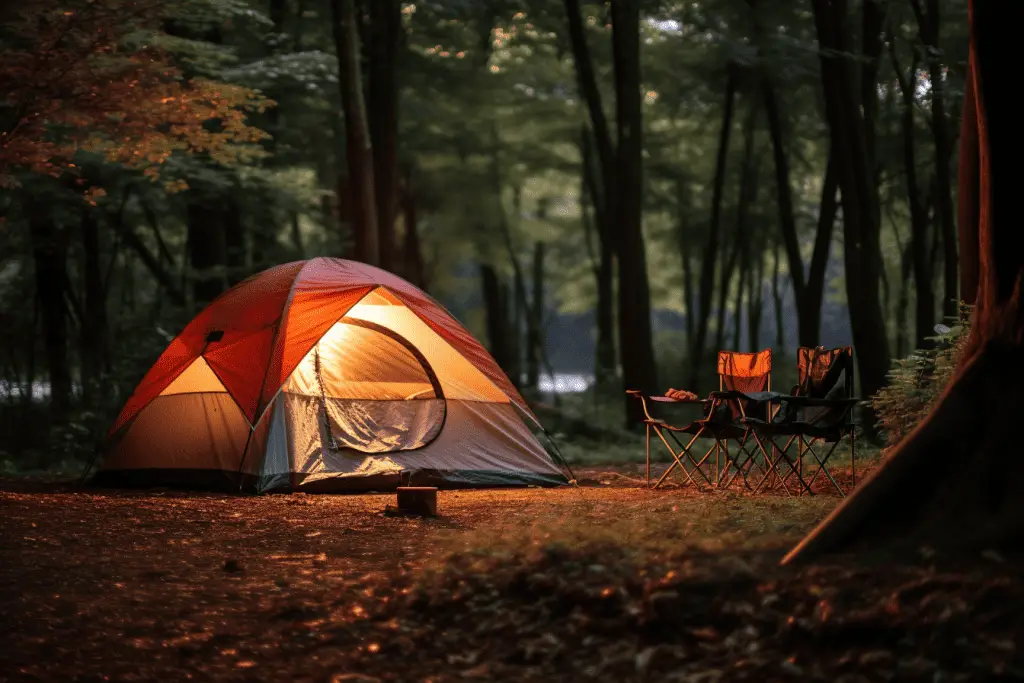
Dispersed camping isn’t for everyone, particularly those who prefer the amenities and social aspects of established campgrounds. The absence of facilities like restrooms and trash disposal means you’ll need to plan thoroughly and take everything out with you. You’ll also need to be self-sufficient when it comes to finding and purifying water, as well as in dealing with any emergency situations that may arise far from help.
If you’re considering dispersed camping, here are some pros and cons to ponder:
| Pros | Cons |
|---|---|
| Solitude: Less crowded, more privacy | No Amenities: No restrooms, trash services |
| Freedom: Choose your own ideal location | Self-Sufficiency: Must provide all your needs |
| Natural Experience: More rugged and raw | Safety Risks: Far from help in emergencies |
| No Fees: Usually free | Regulations: Need to know rules and laws |
| Connection to Nature: Closer to the wild | Environmental Impact: Must follow Leave No Trace principles |
8. Festival Camping
Festival camping offers an unparalleled sense of community and immersion in the event you’re attending. Whether it’s a music or arts festival, camping on-site lets you be part of a continuous experience, well beyond the hours of scheduled activities. You’re not just there for the performances or exhibits; you’re also soaking up the atmosphere, mingling with like-minded people, and maybe even making friends for life. It’s like a temporary village centered around a shared passion.
One of the advantages of festival camping is convenience. Your accommodation is just a short walk away from the main events, so you can easily retreat to your tent for a break, a snack, or a quick recharge. Plus, there’s often a vibrant nightlife scene exclusive to the campgrounds—think campfire jams, late-night food vendors, and spontaneous dance parties. However, amenities can be basic or even scarce, so you’ll need to come prepared. Most festival campsites provide only the essentials like showers and restrooms, and the quality can vary.
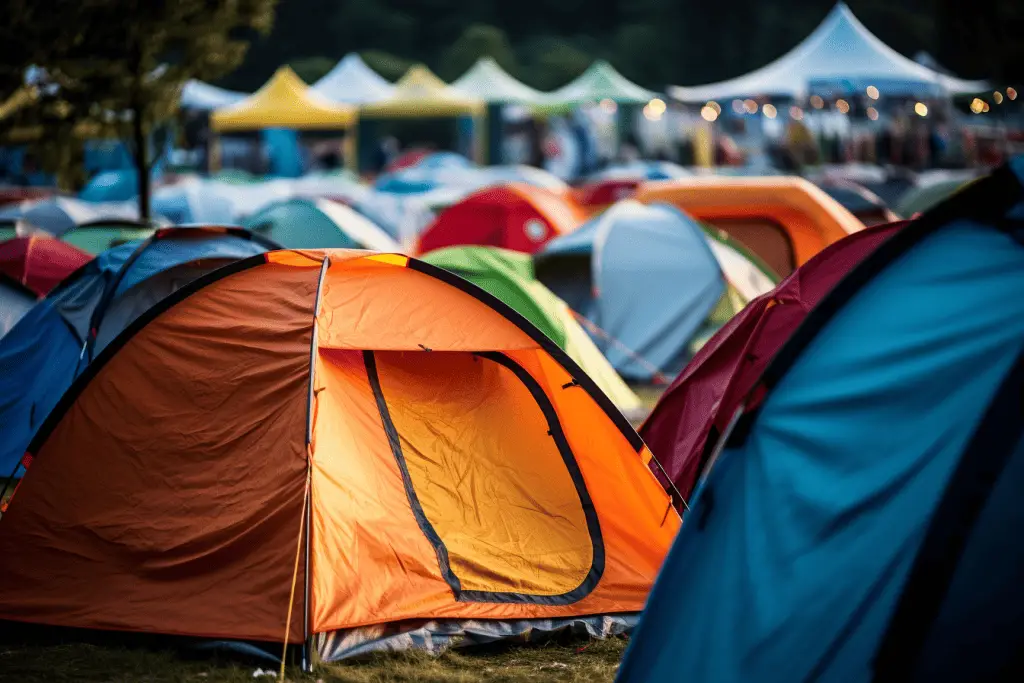
On the downside, privacy and quiet time can be hard to come by in a festival campground. You’ll be in close quarters with other festival-goers, which can be both a blessing and a curse. It’s a social experience, but that also means you’re sharing your space with a lot of people, some of whom may not have the same camping etiquette as you. Noise levels can also be high at all hours, so earplugs are often a must-have item.
If festival camping sounds like your jam, here are some pros and cons to consider:
| Pros | Cons |
|---|---|
| Community Atmosphere: Social and vibrant | Limited Privacy: Close quarters with others |
| Convenience: Close to festival activities | Basic Amenities: Varied quality of facilities |
| Extended Experience: More than just the shows | Noise: High sound levels, even late at night |
| Cost-Effective: Often cheaper than hotels | Crowding: Can be very populated |
| Nightlife: After-hours events and activities | Weather Dependent: Exposed to elements |
Remember, each festival has its own unique camping experience, rules, and amenities, so it’s important to research in advance to know what you’re getting into.
9. Glamping
Glamping, short for “glamorous camping,” offers the best of both worlds: the beauty and tranquility of nature combined with the comfort and amenities of a luxury hotel. Imagine stepping out of a fully furnished tent, complete with a plush bed, only to find yourself surrounded by wilderness. From safari tents and treehouses to yurts and eco-pods, glamping options are as diverse as they are luxurious. It’s a great choice for those who love the idea of being outdoors but aren’t thrilled about sleeping on the ground or forgoing modern conveniences.
The primary draw of glamping is, of course, comfort. You get to enjoy the great outdoors without sacrificing amenities like electricity, running water, and even Wi-Fi in some cases. These comforts can make the experience more accessible for those who are new to camping or have physical limitations. Plus, many glamping sites offer additional perks like guided nature tours, gourmet meals, and spa services, turning a simple camping trip into a holistic vacation experience.
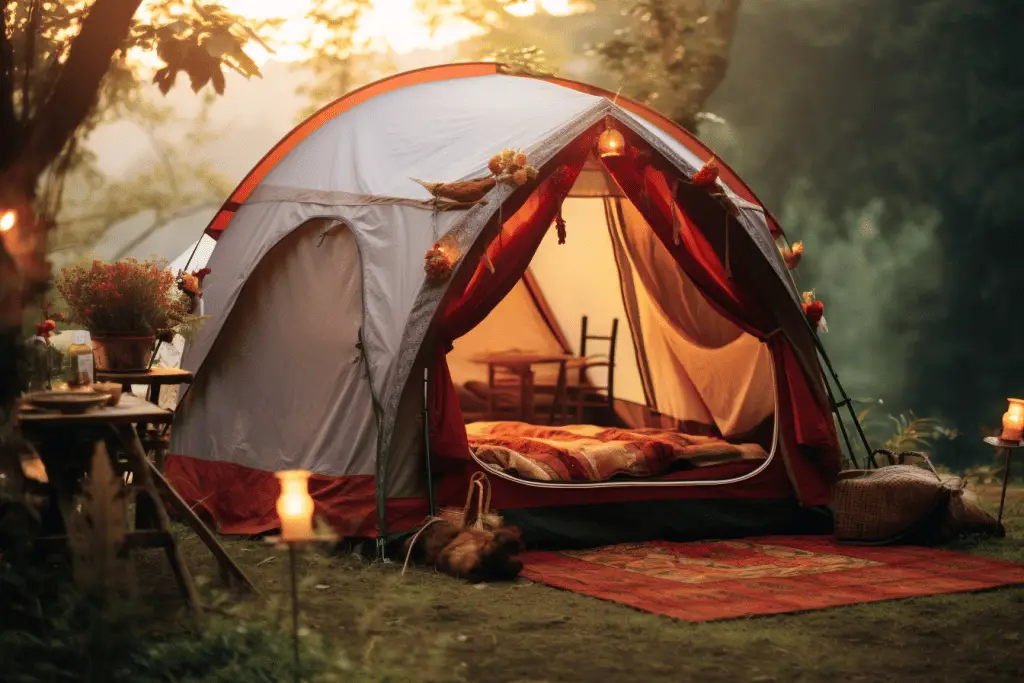
That said, glamping often comes with a steeper price tag compared to traditional camping. While you’re paying for comfort and amenities, it’s not the most budget-friendly way to experience the great outdoors. Additionally, the presence of modern comforts might also disconnect you somewhat from the natural world, depending on how luxurious your accommodations are.
If you’re considering a glamping experience, here are some pros and cons to weigh:
| Pros | Cons |
|---|---|
| Comfort: Modern amenities in a natural setting | Cost: Typically more expensive |
| Accessibility: Good for camping newcomers | Less Rugged: May feel disconnected from nature |
| Variety: Wide range of accommodation types | Booking: Popular spots fill up quickly |
| Extra Services: Tours, meals, and more | Environmental Impact: Could be higher due to amenities |
| Great for Groups: Social and family-friendly | Authenticity: May lack “real” camping feel |
Glamping is a unique way to experience nature, offering a level of comfort you won’t find in traditional camping. It’s an especially good option for those who want to ease into the camping lifestyle or those looking for a more luxurious outdoor retreat. Just be sure to consider your budget and what you want to get out of the experience.
Discover the 10 best places to go glamping in the US!
10. Hammock Camping
Hammock camping is a minimalist’s dream and a fresh twist on traditional tent camping. Instead of pitching a tent on the ground, you’ll be suspending a hammock between two trees, offering you a cozy cocoon for sleeping. It’s especially popular among lightweight backpackers who are eager to reduce their pack weight. Setting up is generally quick and easy, and with the right setup—including a rainfly and bug net—you’re all set for a night under the stars.
One of the standout benefits of hammock camping is the ability to camp in uneven or rocky terrain where it would be difficult to pitch a tent. You’re also elevated off the ground, which means less contact with bugs and water. Weight and space savings are significant too, making it easier to pack light and move fast. However, it’s crucial to understand the Leave No Trace principles when hanging your hammock to ensure you’re not damaging trees or disturbing local habitats.
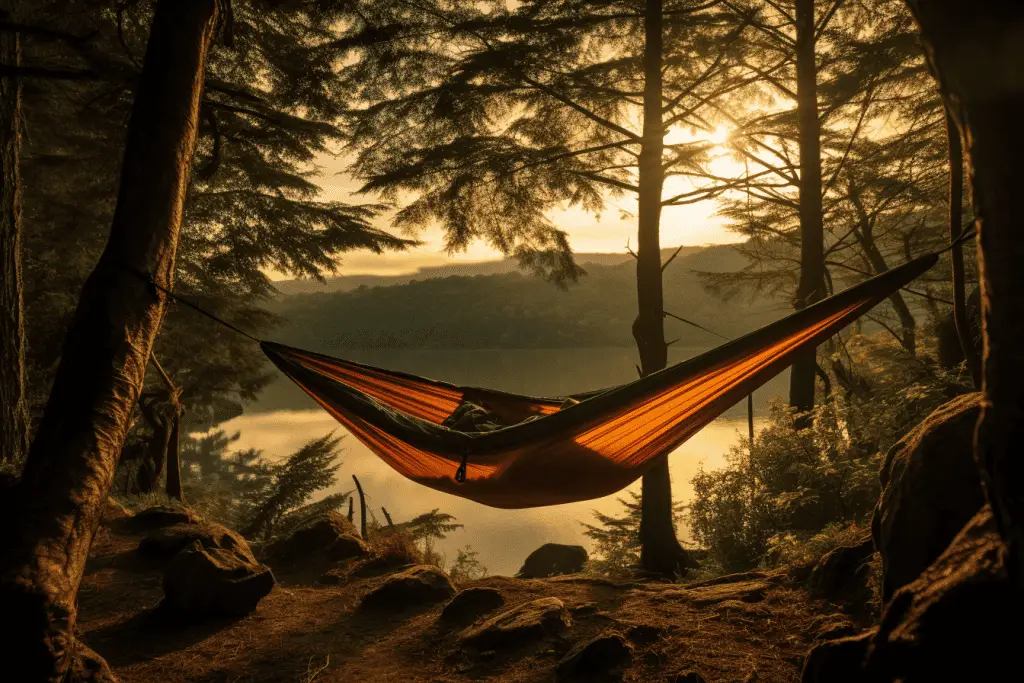
On the flip side, hammock camping can be colder since you’re exposed to airflow from below. Proper insulation is key to staying warm, especially on chilly nights. Also, hammocks generally accommodate only one person, making it less suitable for couples or families. And let’s not forget that finding the perfect pair of trees is essential, so this type of camping is less versatile in environments like deserts or above the treeline.
If you’re considering giving hammock camping a try, here are some pros and cons to mull over:
| Pros | Cons |
|---|---|
| Lightweight: Easier on your back | Cold: More exposure to air flow |
| Quick Setup: Fast and simple | Single Occupancy: Generally for one |
| Versatile Terrain: Uneven ground OK | Limited Environments: Need suitable trees |
| Less Ground Impact: Elevated | Comfort: Can be an acquired taste |
| Close to Nature: Open to the sky | Safety: Potential for falls |
Hammock camping can offer a unique and intimate connection with nature while lightening your load. It’s not for everyone, but if you’re looking for a new outdoor experience and are prepared for its unique challenges, it’s definitely worth a swing.
11. Horseback Camping
Horseback camping offers an adventurous twist to your typical camping experience by adding a powerful and majestic companion to the mix. This form of camping allows you to cover more ground and access remote locations that might be difficult to reach on foot. The connection between you and your horse also adds another layer of enjoyment and responsibility, making the trip both thrilling and fulfilling. Specialized gear is often required to ensure both you and your horse have what you need to make camp comfortable.
One of the big perks of horseback camping is the ability to carry more gear without feeling weighed down. Your equine friend will handle the heavy lifting, allowing you to pack some extra luxuries you might otherwise have to leave behind. It’s also a fantastic way to deepen your bond with your horse, as you’ll be relying on each other in a unique setting. But remember, you’re not just looking after yourself; you’re also responsible for the well-being of your horse, which adds a layer of complexity to your adventure.
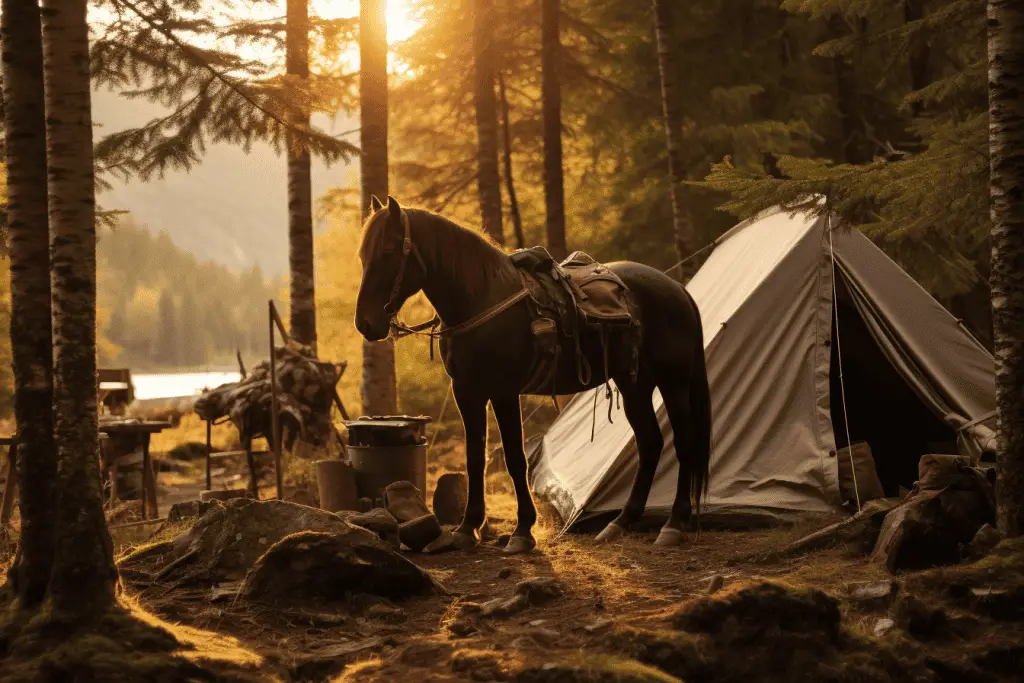
Horseback camping comes with its own set of challenges, too. For starters, you’ll need a decent skill level in horsemanship, including knowing how to care for your horse in an outdoor environment. You’ll also need specialized horse camping gear like feedbags, high-line kits for securing your horse, and portable corrals. Preparing for emergencies is doubly important; you’ll need to know how to handle any medical issues for both yourself and your animal companion.
Before saddling up for a horseback camping trip, take a look at these pros and cons:
| Pros | Cons |
|---|---|
| More Ground Covered: Access remote areas | Skill Required: Need proficiency in horsemanship |
| Carry More Gear: Horses can pack equipment | Specialized Gear: Required for horse care |
| Stronger Bond: Quality time with your horse | Double Responsibility: For both human and horse |
| Unique Experience: Combines riding & camping | Limited Locations: Suitable trails and campsites |
| Adventure: Adds thrill to camping | Safety: Potential risks for you and your horse |
If you’re an experienced rider with a love for the great outdoors, horseback camping can offer a unique and fulfilling way to experience nature. Just remember that it requires significant preparation and a strong sense of responsibility, so it’s crucial to be well-prepared and knowledgeable before you hit the trail.
Take a look at PA’s Department of Natural Resources tips for horseback camping.
12. RV Camping
RV camping takes the concept of “home away from home” to a whole new level. Whether you’re in a simple camper van or a high-end motorhome, this camping style lets you bring along many of the conveniences you’d find in a stationary home, such as a kitchen, bathroom, and even air conditioning. It’s a versatile option, giving you the flexibility to explore a variety of settings without having to worry about pitching a tent or building a fire—unless you want to, of course.
The main advantage of RV camping is comfort. You’ve got a bed, cooking facilities, and often even a shower, all within a few steps. This can make it an appealing option for families, older adults, or anyone who likes the idea of being in nature without roughing it too much. Additionally, RVs offer the convenience of storing all your gear safely and securely, allowing you to travel freely between different sites without the hassle of packing and unpacking.
However, RV camping comes with its own set of challenges. First and foremost, RVs are expensive to purchase and maintain. There’s also the matter of size; navigating an RV requires a different skill set than driving a car, especially in tight or crowded spaces. Campsites that can accommodate RVs may also be limited, and the costs for these sites can be higher than traditional tent sites. Finally, the very comforts that make RV camping appealing can also distance you from the outdoor experience you may be seeking.
Here’s a quick look at some pros and cons of RV camping:
| Pros | Cons |
|---|---|
| Comfort: All amenities at your fingertips | Expense: High initial and maintenance costs |
| Convenience: Easy setup and mobility | Limited Locations: Fewer campsite options |
| Security: Lockable space for gear | Driving Skills: Harder to maneuver |
| Versatile: Suitable for various environments | Disconnection: Less “outdoorsy” experience |
| Family-Friendly: Good for all ages | Higher Campsite Costs: Can be pricier |
RV camping offers a blend of comfort and adventure, making it a versatile choice for many types of campers. While it might not provide the same level of natural immersion as other styles, the conveniences it offers can make for a uniquely enjoyable experience. Just be prepared for the costs and responsibilities that come with piloting your home on wheels.
13. Survivalist Camping
Survivalist camping is about getting back to the bare essentials and testing your ability to thrive in the wilderness with minimal supplies. This isn’t your average weekend camping trip; it’s an immersive experience designed to challenge your survival skills. You might carry only basic tools, like a knife and a fire starter, and rely on your abilities to find food, water, and shelter. The focus is on self-reliance, adaptability, and understanding natural environments in their rawest form.
The sense of accomplishment and skill mastery in survivalist camping is unparalleled. When you succeed in making fire from scratch or foraging for edible plants, the gratification is immediate and deeply satisfying. Moreover, the skills you learn can be life-saving, not just in a wilderness setting but also in emergency situations in general. However, the stakes are high; mistakes can be extremely costly, even dangerous. Comprehensive knowledge and preparation are crucial, and this form of camping is best suited for those who have undergone proper training.
One significant downside to consider is the level of risk involved. Survivalist camping exposes you to various potential hazards, from wildlife encounters to the risk of injury or illness, all with minimal gear to help you out. Also, such an intense experience may not be everyone’s idea of a “relaxing getaway.” The line between thrill and danger is thin, and you need to be fully aware of the risks you’re taking.
Here’s a quick rundown of the pros and cons to consider if you’re thinking about survivalist camping:
| Pros | Cons |
|---|---|
| Skill Mastery: Develop survival skills | High Risk: Exposure to potential hazards |
| Self-Reliance: Enhances independence | Limited Comfort: Minimal supplies and gear |
| Immersive Experience: Deep nature connection | Physical Demand: Can be exhausting |
| Sense of Accomplishment: Rewarding | Expertise Required: Need advanced knowledge |
| Adaptability: Learn to think on your feet | Stress: Mental and emotional challenges |
Survivalist camping isn’t for the faint-hearted, but if you’re looking for an ultimate challenge that will push your skills to the limit, it’s an adventure like no other. Just remember, the key to a successful trip lies in thorough preparation, sound judgment, and an intimate knowledge of survival techniques.
14. Trailer Camping
Trailer camping sits in a sweet spot between traditional tent camping and the all-inclusive experience of RV camping. With a trailer hitched to your vehicle, you get a portable base camp that often includes sleeping quarters, a small kitchen, and sometimes even a bathroom. Whether you opt for a teardrop trailer or a more expansive pop-up, the idea is to bring along some of the comforts of home without the bulk and expense of a full-on RV.
One of the best things about trailer camping is its accessibility. You don’t need a specialized vehicle; a regular car with towing capabilities is often sufficient. This opens up trailer camping to a broader audience who might not be interested in the complexities of RV ownership. Plus, trailers are generally easier to maneuver than an RV, making them more versatile when it comes to choosing a camping spot. And let’s not forget the convenience factor—setting up camp is usually a lot quicker and less strenuous when you’ve got a trailer as your base.
However, trailers come with their own set of challenges. They add weight and length to your vehicle, affecting its handling and fuel efficiency. You’ll also have to learn the ropes of towing, including skills like reversing with a trailer attached, which can be quite tricky. And although a trailer offers more amenities than a tent, it’s still a more confined space than what you’d get with most RVs, which may limit the level of comfort you can achieve.
Here’s a quick rundown of the pros and cons:
| Pros | Cons |
|---|---|
| Accessibility: Easier entry point than RVs | Added Weight: Affects vehicle performance |
| Easier to Maneuver: Smaller than an RV | Limited Space: Less room than an RV |
| Quick Setup: Faster than tent camping | Towing Skills: Learning curve for handling |
| Versatility: Fits into more camping spots | Fuel Efficiency: Can reduce miles per gallon |
| Comfort Upgrades: Basic amenities included | Storage: Requires space when not in use |
If you’re looking for a comfortable camping experience without going all out on an RV, trailer camping could be your jam. It offers a blend of convenience and simplicity, making it a good middle-ground option. Just make sure you’re prepared for the challenges of towing and can make do with the smaller living quarters.
15. Ultralight Backpacking
Ultralight backpacking is all about efficiency and simplicity. This style of camping aims to minimize pack weight by carrying only the essentials and opting for extremely lightweight gear. We’re talking about stripping down your pack to the bare minimum—everything from your tent to your toothbrush is meticulously chosen to save weight. The goal is to make hiking and camping easier on your body, allowing you to cover more ground and fully engage with the natural world around you.
The primary advantage of going ultralight is the freedom of movement. With less weight on your back, you’ll experience less fatigue, less strain on your joints, and you’ll be able to hike longer distances. This makes it easier to reach remote or less crowded locations, providing a more serene camping experience. You also become more attuned to your surroundings, as the minimalistic approach tends to shift your focus from your gear to the natural world.
However, going ultralight isn’t without its downsides. The cost of specialized lightweight gear can be pretty steep, and there’s less room for error since you’re carrying only the bare essentials. If something goes wrong or you find you’ve forgotten an important item, you have fewer resources to fall back on. Plus, you may need to sacrifice some comforts—like a cushy sleeping pad or a roomy tent—to keep weight down.
Before making the switch to ultralight backpacking, weigh these pros and cons:
| Pros | Cons |
|---|---|
| Less Physical Strain: Easier on your body | Higher Cost: Lightweight gear can be expensive |
| Greater Mobility: Cover more ground | Less Comfort: Fewer luxuries |
| Minimalism: Simplifies the experience | Less Room for Error: Fewer backup resources |
| Closer to Nature: Enhanced awareness | Skill-Intensive: Requires careful planning |
| Energy Efficient: Reduces fatigue | Weather Dependent: Less gear for adverse conditions |
Ultralight backpacking offers a rewarding way to immerse yourself in nature without being weighed down by heavy gear. It’s a style that requires careful planning, a willingness to forego some creature comforts, and a larger initial investment, but the freedom and closeness to nature it affords can make it well worth the effort.
Choosing The Best Type of Camping Style For You
So there you have it—a rundown of diverse camping styles, each offering its own unique experience of the great outdoors. From the creature comforts of glamping to the heart-pounding thrills of cliff camping, there’s a style for every adventurer out there. The pros and cons tables should help you weigh your options, but remember: the best camping experience is the one that makes you happiest, whether that means a starlit night on a remote mountain or a cozy evening by the fire with all the amenities.
Ready to pack your bags and hit the trail? Whatever style of camping you choose, the most important thing is to respect nature, leave no trace, and be a responsible camper. The wilderness is a treasure that we all share, so let’s do our part to keep it beautiful for generations to come.
